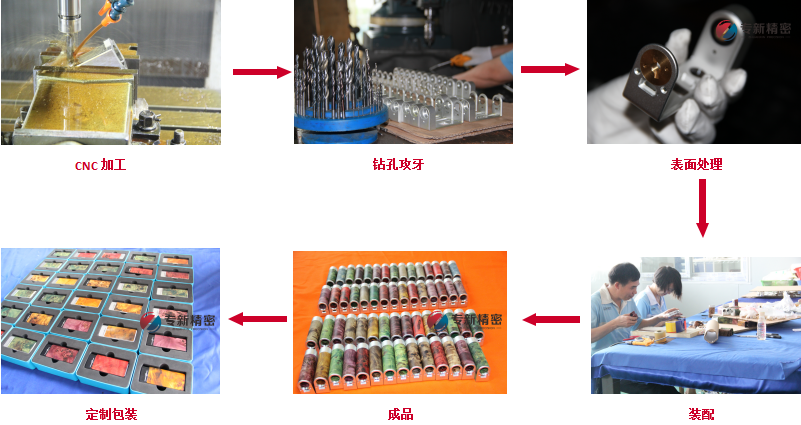Name:CNC machining products, precision 0.01mm, a variety of materials + a variety of surface treatment
Materials:Aluminum alloy, bakelite
Technology:CNC machining, dental retainer
Surface:Anodizing, radium carving, light knife
Allowance:+/-0.01mm
Number:500
Delivery:15
Product details

Processing details

What materials will be used in CNC machining products?
CNC machining materials are very wide, common are: aluminum alloy, stainless steel, magnesium alloy, titanium alloy, zinc alloy, nickel alloy, steel, copper, plastic and so on. No matter what material you choose, as long as it is available on the market, we can do it!

What surface treatment can CNC machining products do?
In order to the beauty of the product and corrosion resistance, wear resistance and other properties, often need to do a variety of surface treatment, are you worried that if the processing and surface treatment of the two suppliers are not in place, it will lead to the whole product wasted? New precision has long been to provide customers with CNC machining + surface treatment and a series of services, the common surface treatment are: Powder spraying, painting, sandblasting, shot blasting, electroplating, electrophoresis, blackening, radium carving, screen printing, CD pattern, etching, highlight, polishing, anodizing, thick film oxidation, micro arc oxidation, etc., for you to solve the problems of multiple manufacturers of a product, save you time and worry!

The first inspection process - raw material inspection
The type of metal material is very wide, it is difficult to distinguish from the surface, and the characteristics of different models are different, especially in the research and development test, using the wrong material may lead to problems in the entire research and development, a CNC machining manufacturer with rich processing experience and strict requirements for quality must have a spectral analyzer that can detect the material, in order to ensure the authenticity of the material. To ensure the normal operation of the product, the new precision spectrometer can test a variety of grades: steel, aluminum, copper, etc.

The second inspection process - tool testing
When the programming master writes the CNC machining program, the first thing the operator has to do is to prepare the required tool in advance, and the new precision CNC operator will do one more thing -- first through the tool detector to detect the flatness of the tool blade, and the concentricity of the tool after the tool is installed into the tool head. The risk brought by the tool is controlled before the machining, and the step of detecting the concentricity on the CNC machine is eliminated, which improves the machining efficiency.

The third inspection process - self-inspection
When the CNC program is finished, the operator will self-check on the machine to ensure that it is correct and then go to the next program or get off the machine to control the quality of each process.

The fourth inspection process - inspection
Inspection personnel carry out sampling inspection of semi-finished products in processing, and once again ensure the qualified rate of products.

The fifth inspection process - total quality inspection
According to the product shape and tolerance requirements, the quality department colleagues choose three dimensional, two dimensional, height meter, micrometer and other precision instruments to measure all dimensions of the product to ensure that the product size meets the requirements of customer drawings.

The 6th inspection process - surface treatment and then inspection
Surface treatment is required for most products, but the product with strict tolerance requirements for electroplating will have a tolerance of 0.01mm, and the tolerance for spraying and painting will be about 0.05mm. Therefore, we will carry out dimensional inspection on all products after surface treatment again to ensure that the size after surface treatment is within the precision range required by customers.
